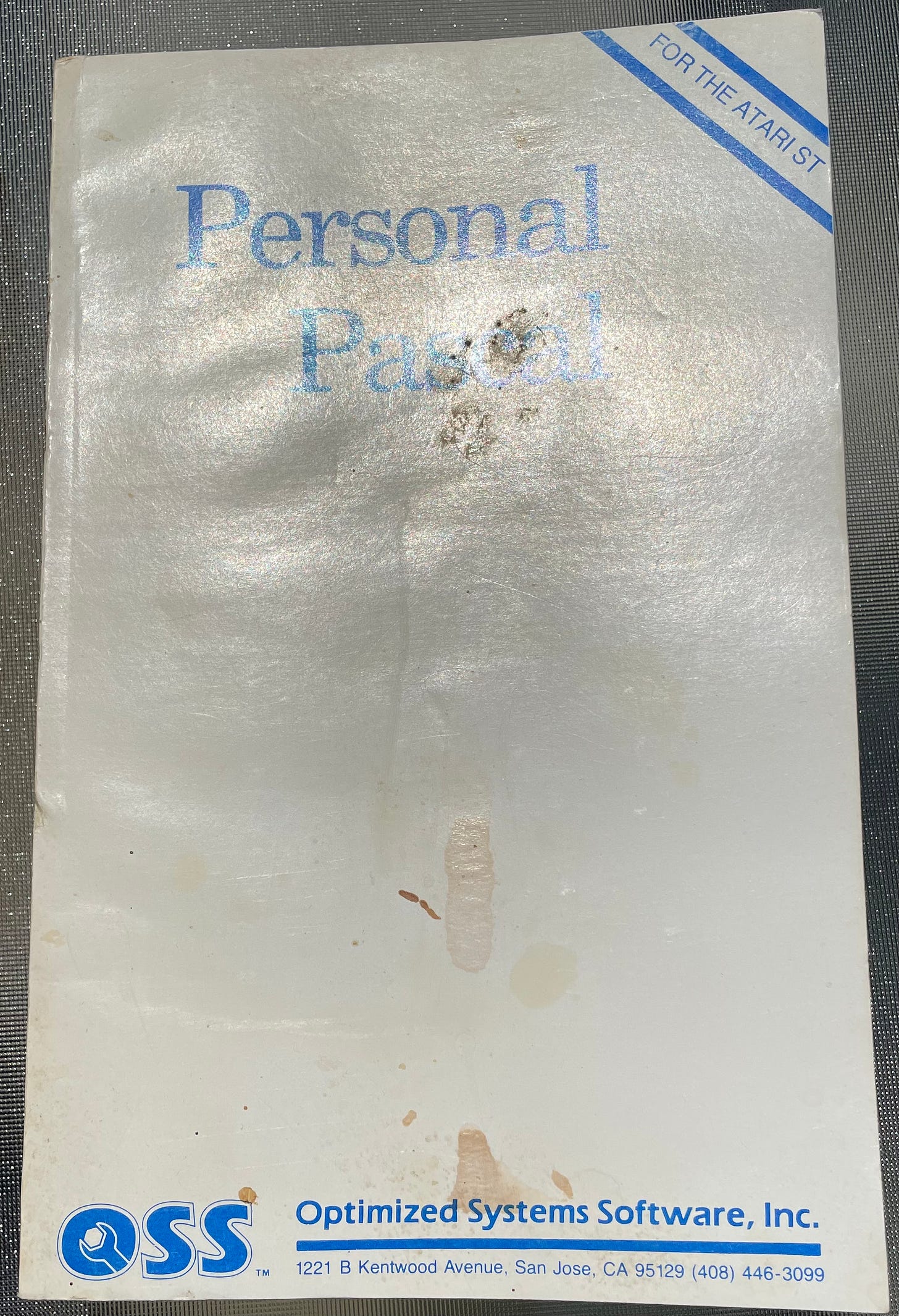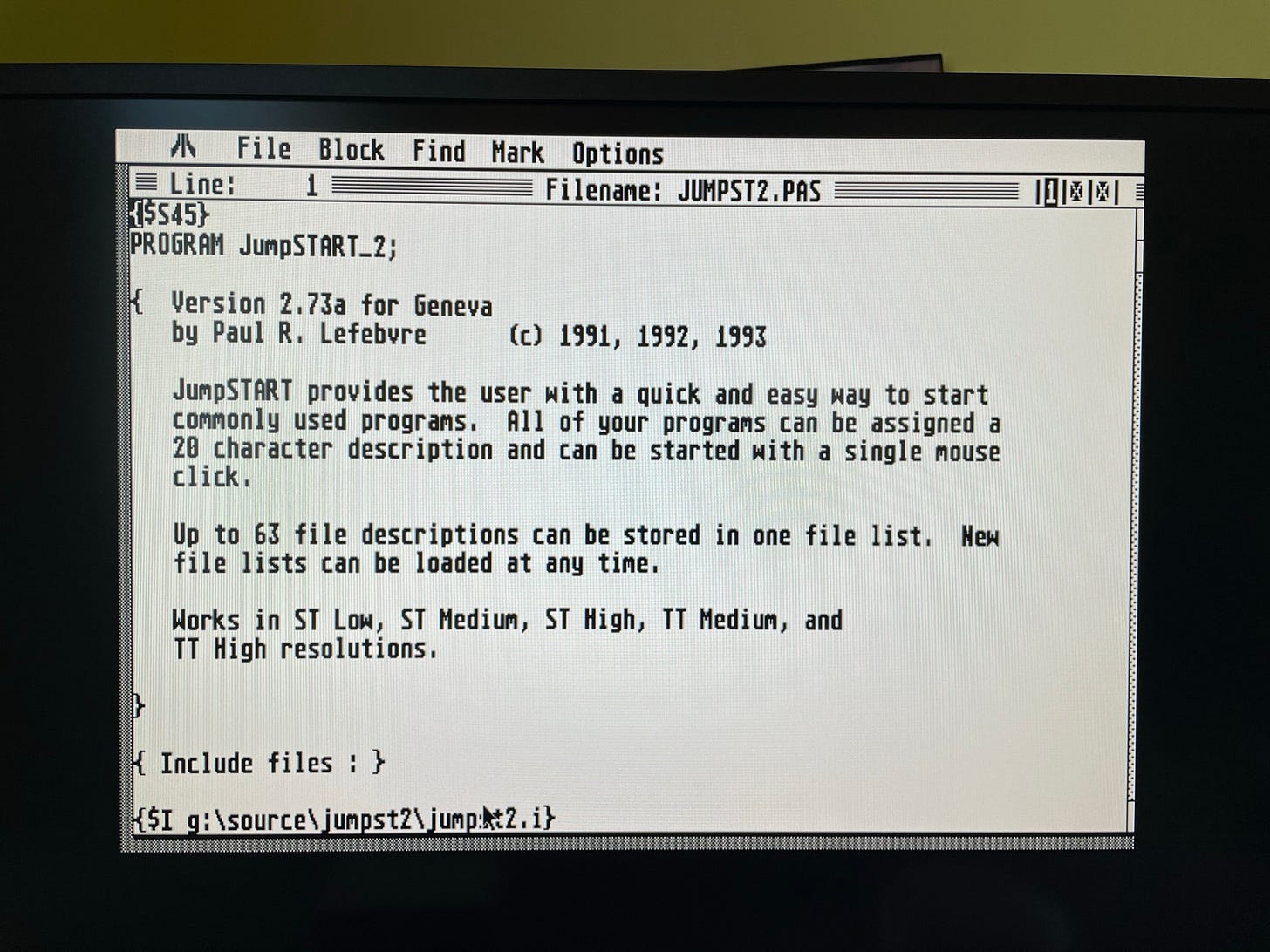Atari ST Pascal Compilers
I programmed my Atari ST using a variety of languages back in the day, including GFA BASIC and C (with various compilers), but I preferred Pascal. The primary version of Pascal I used was Personal Pascal from Optimized Systems Software (OSS). These were the fine folks that made BASIC XE, my favorite language for my Atari 8-bit, so it was a natural choice1.
Although OSS did not create Personal Pascal (it was licensed from Europe where it was known as ST Pascal), it was a great version of Pascal. I started with version 2 which had an updated manual and newer features such as a GEM-based text editor.
I have Personal Pascal installed on my Mega STe today and it mostly works OK, except that the text editor will not save anything. It complains that there is not enough disk space, which is clearly not true as I have very large “hard drives” courtesy of my UltraSatan SD card hard drive emulator.
I suspect the software is getting an Integer overflow when reading the disk space that is resulting in a negative number being returned. Fortunately I can use any other editor instead, so this is not a big limitation.
Personal Pascal consisted of the Manager which is where you controlled most of the settings, and launched the Editor, Compiler and Linker. You could also compile directly from the Editor, which was nice.
Personal Pascal was reasonably quick to compile, but it was no speed demon. It certainly benefitted from a RAM disk (or hard disk).
The Personal Pascal editor was very fast for the time and I wonder if it perhaps shared some code with the later Tempus text editor.
Monday posts are for Goto 10 paid members. Keep reading with a paid subscription to Goto 10. You’ll get to read the rest of this article, plus get access to the full Goto 10 archive, perks and Monday posts going forward. Thanks for your support!





